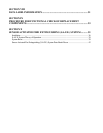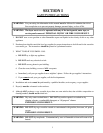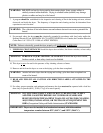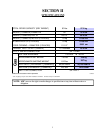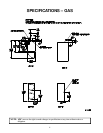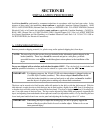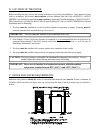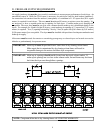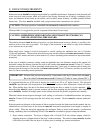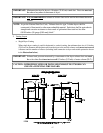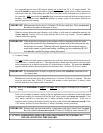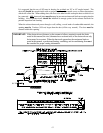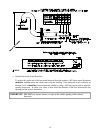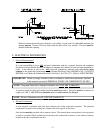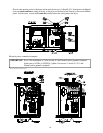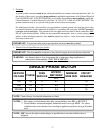
10
E. EXHAUST REQUIREMENTS
Exhaust ductwork should be designed and installed by a qualified professional. Improperly sized ductwork will
create excessive back pressure which will result in slow drying, increased use of energy, overheating of the
dryer, and shutdown of the burner by the airflow (sail) switches, burner hi-limits, or basket (tumbler) hi-limit
thermostats. The dryer must be installed with a proper exhaust duct connection to the outside.
CAUTION: This dryer produces combustible lint and must be exhausted to the outdoors.
When possible, it is suggested to provide a separate exhaust duct for each dryer.
CAUTION: IMPROPERLY SIZED OR INSTALLED EXHAUST DUCTWORK CAN
CREATE A POTENTIAL FIRE HAZARD.
The exhaust ductwork must be laid out in such a way that the ductwork travels as directly as possible to the
outdoors with as few turns as possible. The shape of the ductwork is not critical as long as the minimum
cross-sectional area is provided.
When single dryer venting is used for horizontal or vertical venting, the minimum duct size is 10-inches
(25.40 cm) in diameter. The ductwork from the dryer to the outside exhaust outlet must not exceed a distance
of 35 feet (10.67 meters) and have no more than two (2) elbows (including both connection to dryer and outside
protection).
In the case of multiple (common) venting, using the applicable duct size (diameter) noted in this manual, for
horizontal venting the distance from the last dryer to the outside outlet must not exceed 15 feet (4.57 meters)
and have no more than one (1) elbow (including outside protection). In the case of common vertical venting, the
distance from the last dryer to the outside outlet must not exceed 25 feet (7.62 meters) and have no more than
three (3) elbows (including outside protection).
IMPORTANT: Exhaust back pressure measured by a manometer at the dryer exhaust duct area must
be no less than 0 and must not exceed 0.3 inches (0.74 mb) of water column (W.C.).
It is suggested that the use of 90º turns in ducting be avoided; use 30º or 45º angles instead. The ductwork
should be smooth inside with no projections from sheet metal screws or other obstructions, which will collect
lint. When adding ducts, the duct to be added should overlap the duct to which it is to be connected. ALL
ductwork joints must be taped to prevent moisture and lint from escaping into the building. Also, inspection
doors should be installed at strategic points in the exhaust ductwork for periodic inspection and cleaning.
When the exhaust ductwork passes through a wall, ceiling, or roof made of combustible materials, the opening
must be 2-inches (5.08 cm) larger than the duct (all the way around). The duct must be centered within this
opening.
If the ductwork run (distance) or the amount of elbows required exceeds the limits noted in this manual, the size
(diameter/cross-sectional area) of the ductwork must be increased in proportion to the length or number of
elbows added. When the ductwork approaches the maximum limits as noted in this manual, a professional
heating, ventilating, and air-conditioning (HVAC) firm must be consulted for proper venting information.
1. Dryer exhaust connection. The dryer is shipped with a 10-inch (25.40 cm) exhaust adapter, which for
shipping purposes is shipped inside of the dryer’s basket (tumbler). This exhaust adapter must be installed
(with screws provided) once the dryer is in place, prior to making any exhaust connections.



